Artlecture Facebook
Artlecture Facebook
Artlecture Twitter
Artlecture Blog
Artlecture Post
Artlecture Band
Artlecture Main
When I have titled this particular series of columns ‘The 2020 Home’, it was specifically because I have anticipated — even though I have so wished otherwise — that we will ...
When I have titled this particular series of columns ‘The 2020 Home’, it was specifically because I have anticipated — even though I have so wished otherwise — that we will be living in the aftermath of the events of 2020. Indeed, this year will be one where people will have to adjust to the state of ‘New Normal’ in various stages of lockdown and social distancing until the vaccines roll out. Even with the vaccines, we cannot fully guarantee its success. Hence, I would like to coin this state that will come to be unanimous with the year 2020 with the title of the series.
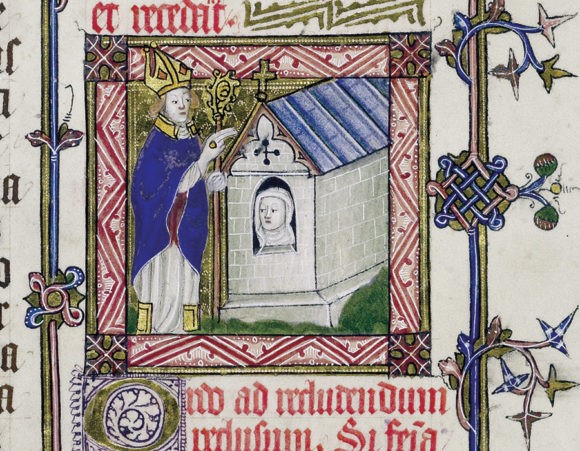
‘Enclosure of an anchorite, from the Clifford Pontifical’ in MS 79, fol. 72r, Corpus Christi College,
Cambridge (Image courtesy to Corpus
Christi College, Cambridge)
Just
as we have been spending a great deal of time at home, a bright yet often
overlooked figure within medieval history came to mind. Julian of Norwich.
Little is known about her life: she lived practically her whole life in the
English city of Norwich, which oversaw horrifying wake of the Black Death
between 1348 and 1350; the Peasants’ Revolt of 1381; and
the suppression of the Lollards for their heresy. For much of her life, as an
English anchoress, she lived in permanent seclusion in her cell. In May of
1373, at the age of thirty and a half, Julian was stricken by a severe
illness and became convinced she was dying. Instead, she received extraordinary
visions of Christ on the cross. The Revelations of
Divine Love is a complex text documenting a series of
sixteen visions that Julian experienced, during the near-fatal illness, for
which she had prayed in her youth. It is thought that Julian wrote, or
dictated, a “Short Text” soon after her visions, and
a subsequent “Long Text”, some twenty years later.
The given text is taken from the “Short Text” of the Revelations,
and consists of three excerpts taken from the first few chapters of her work.
The first of the three comes from the third chapter and it sets the scene by
describing her condition before she received the first vision, or “Shewing”, as she
refers to them throughout the text. The second part is taken from the fourth
chapter, which marks the very beginning of the first vision, drawing on the
Crucifixion scene, with Christ bleeding from wearing his crown of thorns. The
last section comes from the fifth chapter, which chronicles Julian’s vision of the “hazelnut”, in which she finds herself
holding a ‘little thing, the size
of a hazelnut’ in the palm of her
hand. The excerpts are characterised by series of actions and events that take
place and it is complicated by the underlying thematic aspects that they
contribute to the overall message of the Revelations.
The visions it records, as one would find, are inspired by the ‘cross’, which has been brought to Julian as she lay in her death-bed
and the ensuing paragraphs will explore and investigate how such works were
received from the records of her tantalising experience.
The
text below is an excerpt from the the Long Text :
Those who
were with me sent for the parson, my curate to be present at my end. He came, and
a boy along with him, and brought a cross, and by then my eyes were fixed and I
could not speak. The parson set the cross before my face and said, ‘Daughter, I
have brought you the image of your Saviour. Look at it and take comfort from
it, in reverence of him who died for you and me.’
It seemed to
me that I was all right as I was, for my gaze was fixed upwards into heaven
where I trusted I was going. But nevertheless I consented to fix my eyes on the
face of the crucifix if I could, so as to hold out longer until the moment of
my death; for it seemed to me that I could manage to look straight ahead of me
for longer than I could look upwards. After this my sight began to fail, and it
all grew dark around me in the room, as dark as though it had been night,
except that in the image of the cross there remained a light for all mankind,
and I never knew how. Everything other than the cross was ugly to me, as if
much crowded with fiends.
…
And at this,
I suddenly saw the red blood trickling down from under the crown of thorns— hot
and fresh, plentiful and lifelike—just how it seemed to me that it was when the
crown of thorns was thrust upon his blessed head. Just so he who was both God
and man suffered for me. I had a true and powerful perception that it was he
himself who showed this to me without any intermediary.
…
At the same
time as I saw this bodily vision, our Lord showed me spiritually in a vision
how intimately he loves us. I saw that he is everything that is good and
comforting and helpful to us. He is our clothing that enwraps us and enfolds
us, embraces us and wholly encloses us, surrounding us out of tender love, so
that he can never leave us. And so in this vision, as I understand it, I saw
truly that he is everything that is good.
And in this
vision he also showed me a little thing, the size of a hazelnut, lying in the
palm of my hand, and it was round as a ball, as it seemed to me. I looked at it
and thought, ‘What can this be?’ And the
answer came to me in a general way, like this, ‘It is all
that is made’. I wondered how it could last, for it
seemed to me so small that it might have disintegrated suddenly into
nothingness. And it was answered in my understanding, ‘It lasts,
and always will, because God loves it’; and in the same way everything has its
being through the love of God.[1]
So, what
can we learn from her experiences how works of art were experienced in the
Middle Ages?
Setting the scene on her death-bed, Julian opens the first
of her sixteen visions by emphasising the frailty of her physical condition.
She shows acute awareness and recognition of the end of her time on earth (‘present
at my end’) and acknowledges this frequently as she firstly, calls her priests
to be brought to her, and secondly by noting that her gaze ‘was fixed upwards
into heaven, where I trusted was going’, which hints at her readiness to finish
her time. Her ‘fixed’ eyes and her inability to form speech (‘I could not speak’)
reinforces the inevitable passivity of her state, and it is further emphasised
as the cross is ‘brought’ to her, which she receives only via her eyes. The
passivity outlined in the initial few sentences is contested by her first
active action. By ‘consent[ing] to fix [her] eyes on the face of the crucifix’,
she chooses to commit herself to the act of gazing upon the face of Christ, an
action indicative of her engagement with the object. Noting that her
surroundings ‘all grew dark’ around her and that ‘everything other than the
cross was ugly to me’, she underlines the ascetic, focused nature of her
looking.
As she gazes at the object, her initial impression is
coloured by her immediate recognition of the narrative that it depicts: of the
Christ on the Cross. The following second excerpt is packed with literary
devices, which heightens the vivid realism of the religious drama and leaves us
a clue that Julian is retelling the Crucifixion narrative in her mind, in
response to the cross. Her descriptive imagery of seeing ‘the red blood
trickling down from under the crown of thorns’ and the listing of adjectives ‘hot
and fresh, plentiful and lifelike’ paints the moment of Christ suffering. By
shifting her gaze onto the crucifix, it is this fixing of her gaze — this very
act of beholding — animates the narrative of the object, through which she
re-lives the moment of the Crucifixion narrative and establishes a degree of
emotional connectivity with the suffering Christ and her own bodily suffering
in the physical world.
The activation of the Crucifix is also marked by the
changes in the tempo of the writing, as she notes that she ‘suddenly saw’ the
fresh blood trickling down on the face of Christ. Her choice of words such as ‘suddenly’,
‘fresh’, and ‘thrust upon’ in the second excerpt creates a sense of swiftness
and the prompt unfolding of the religious drama. The repetition of the word ‘just’,
further reinforces the change in the pace of this encounter and builds up a
sense of anticipation for what more to come. The changes made in the tempo of
her account is complemented by her vivid verbal description demonstrating that
she feels as though she is presently witnessing the moments of Christ’s
suffering that took place in 1300 years ago, marking the change in temporality
of her experience. This change is illustrated by her emphasis on her present “self”,
(‘just how it seemed to me’, ‘suffered for me’, ‘I had a true and powerful
perception’, ‘showed this to me’), which draws parallel between the Crucifixion
narrative, in which Christ suffers and Julian’s own physical illness. Yet it
also marks the contrast between the timeless relevance of Crucifixion, and the
eternality of God’s plan for the salvation, and the present subjectivity of her
own fleeting self, experiencing and reliving through this narrative.
The act of gazing at the cross, which had been brought to
her was the only action that she could take in her state of near-death
paralysis. As she took in the figure of the crucified Christ and recounted the
Crucifixion narrative in her mind, she was able to share an emotional affinity
with Christ and was transported out of humanly conceived temporal realm to a
divine, atemporal realm, where she comes to share the gaze of God looking down
at his created object. What encapsulates this extrinsic vision, as she notes,
is love. Following the encounter with the suffering Christ, her vision
transformed to another Biblical imagery of Christ becoming ‘our clothing that enwraps us
and enfolds us’, echoing St. Paul’s
words in the book of Galatians that ‘for
as many of you as have been baptised into Christ have put on Christ.’[2] It is from this experience
of love that she is transported to the creative moment of being united with the
creative spirit of God, who reveals the depth of the truth behind the creation
of the universe. Her concluding remarks are equally striking; ‘it lasts, and
always will, because God loves it’, and ‘in the same way
everything has its being through the love of God’, which echo the ‘tender love’ that Julian
experienced earlier. This love of God becomes the very conditioning factor that
allows her to see beyond the worldly realm, evocative of Paul’s words to the
Corinthians: ‘For now we see through a glass, darkly; but then face to face:
now I know in part; but then shall I know even as also I am known. And now
abideth faith, hope, charity, these three; but the greatest of these is
charity.’[3] Enabling one to behold ‘face
to face’ what one may merely catch a glimpse of the divine on earth, is mediated
by charity. It is this charity, the very encompassing agape love of God that has been shown to her
in the image of enveloping clothing. The cross becomes the material catalyst of
evoking the love, which manifested itself on the cross. Love lends itself to
the gaining of a greater, divine knowledge and this expansion in her sight is
complemented by her knowledge of Christ, which allows her comprehend the
ultimate truth, the essence of the created world.
The role played by the object — the cross, in this
instance — is crucial even if Julian may not necessarily be aware of its
significance. In her endeavour to emphasise that she received this vision
directly from God, she notes that it occurred ‘without any intermediary’.
However, the artwork itself becomes the intermediary, the point of trigger that
offsets her frail state of mind to contemplate the Crucifixion narrative and
establish that sense of emotional connectivity with the dying Christ. She does
not comment nor notice the physicality of the object placed in front of her,
and it is as if the cross became invisible, much like a screen. This perhaps
testifies the intensity of her encounter with God. The role of the gaze is
equally as critical as it activates and animates the object in her mind, and in
the recounting of the biblical narrative, through the act of beholding the
object, Julian is transported from her present condition on earth to a divine
realm, where she comes to experience God. Ultimately, she sees the ‘hazelnut’,
the spherical universe placed on the palm of her hand and as she looks at the
object, she comes to realise that she is sharing the gaze of God, looking at
his creation: she is united with God through the very act of gaze.
The didactic nature of Julian’s experience and her fervent
desire to share them indicate that the readers, too, may profit from her
visions and have a similar set of sensations. Her tone is gentle, yet firm and
instructive. Throughout the “Short Text”, she is precise about what it is that
she came to understand, and she is also precise about how it is that this
comprehension came about. Like many other thinkers, Julian appears to have had
experiences that might be thought to fall under the rubrics of both the visionary
and the mystical. Her condition, which allowed her to share an emotional
connectivity with the suffering Christ is overcome by her experience of God,
which has been catalysed by the cross that she has come to behold. The material
cross has prompted her to behold the very figure it depicts, and to contemplate
and meditate on the religious narrative, which has allowed her to have an out
of body, transformative visions. Her visions, initially motivated by bodily
illness, allowed her to see the there is a greater ill than bodily illness, and
such illness can be overcome through the unification with Christ, a message
that the Revelations seeks to testify.
Disregarding the devotional nature of her account, her
message is one essentially founded in hope. It is that all-encompassing charity
that are much needed. Just as Julian has shared with us all, her message rings
just as true today: “all shall be well”.
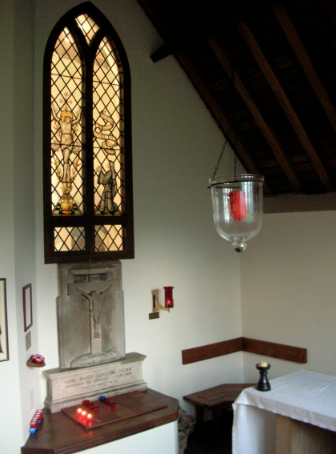
Julian of Norwich, an anchorite’s cell in St. Julian of Norwich Church, Norwich
(Image
courtesy to https://www.orderofjulian.org/About-Julian)
☆Donation:
Sarah J Yoon
I read History of Art as an undergraduate at Oxford University and studied Medieval Studies for masters at the Courtauld Institute of Art. Presently, I am working as a researcher for a private art collector that specifically collects antiquities in Seoul. My primary research interest lies within the late medieval European visual and material culture, touching on the semantic relationship between images and text, historicity, and reinterpretation of medieval art history in light of contemporary critical theories
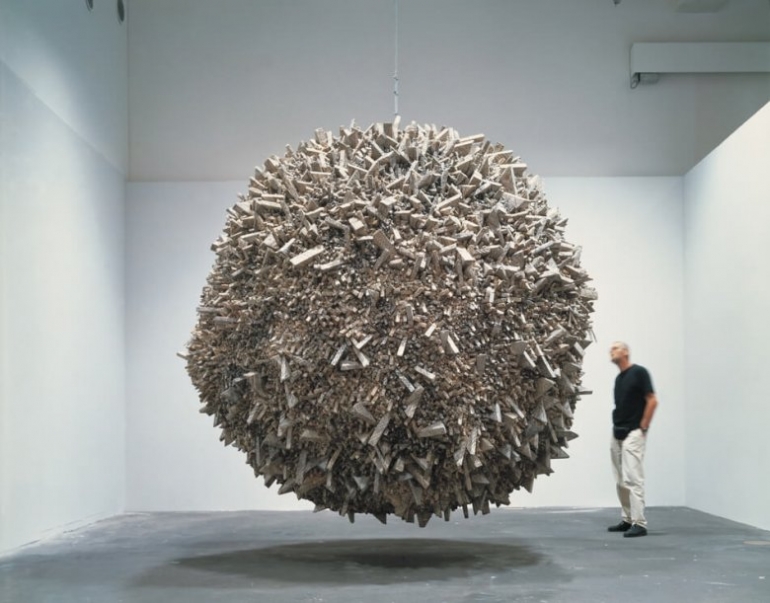
Chun Kwang Young: Times Reimagined

Poetry and Performance. The Eastern European Perspective
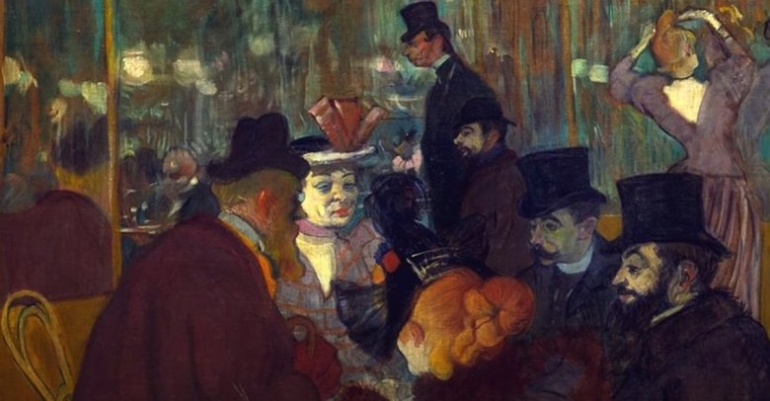
Learn About the Art & Lives: Life of an Artist

JR: Chronicles
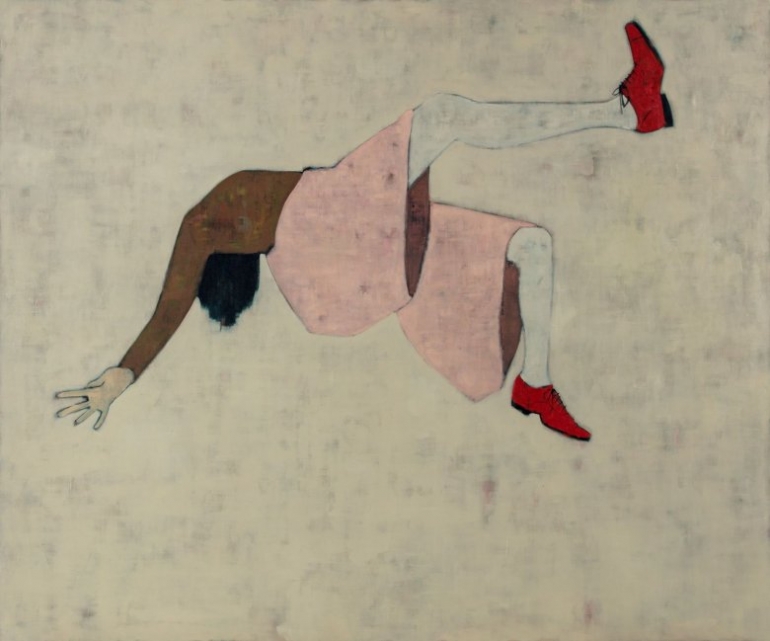
Taking Space by Sara Berman
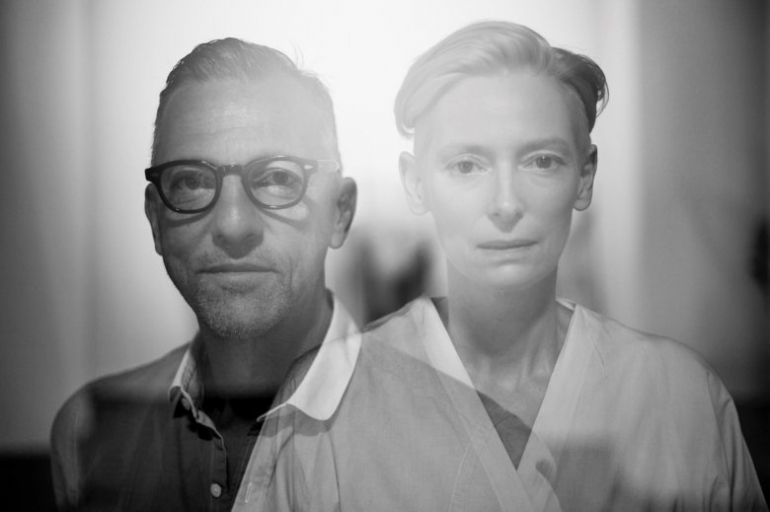
Tilda Swinton Pays Tribute to the Films of Pier Paolo Pasolini
![Chinese Modern Photography _ [Professional Amateur and Emerging Modernity : Luo Bonian and His Contemporaries 1930-1940s] Chinese Modern Photography _ [Professional Amateur and Emerging Modernity : Luo Bonian and His Contemporaries 1930-1940s]](/data/uploads/2021/7/20210706/aa7097455419d1244a023b22b500ae41_thumb_770.jpg)
Chinese Modern Photography _ [Professional Amateur and Emerging Modernity : Luo Bonian and His Contemporaries 1930-1940s]
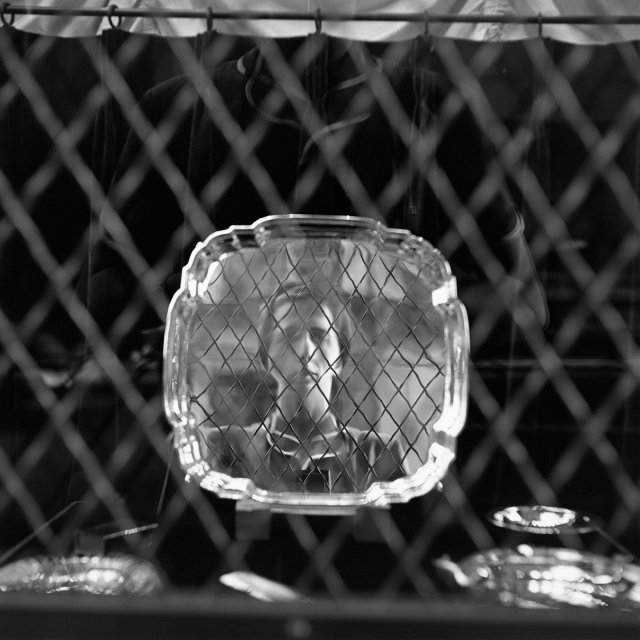
Vivian Maier _ {A Hidden Genius: Finding Vivian Maier}

A Thought on the Institutional Position of the Medieval Art Today
*Art&Project can be registered directly after signing up anyone.
*It will be all registered on Google and other web portals after posting.
**Please click the link(add an event) on the top or contact us email If you want to advertise your project on the main page.
☆Donation: https://www.paypal.com/paypalme2/artlecture

